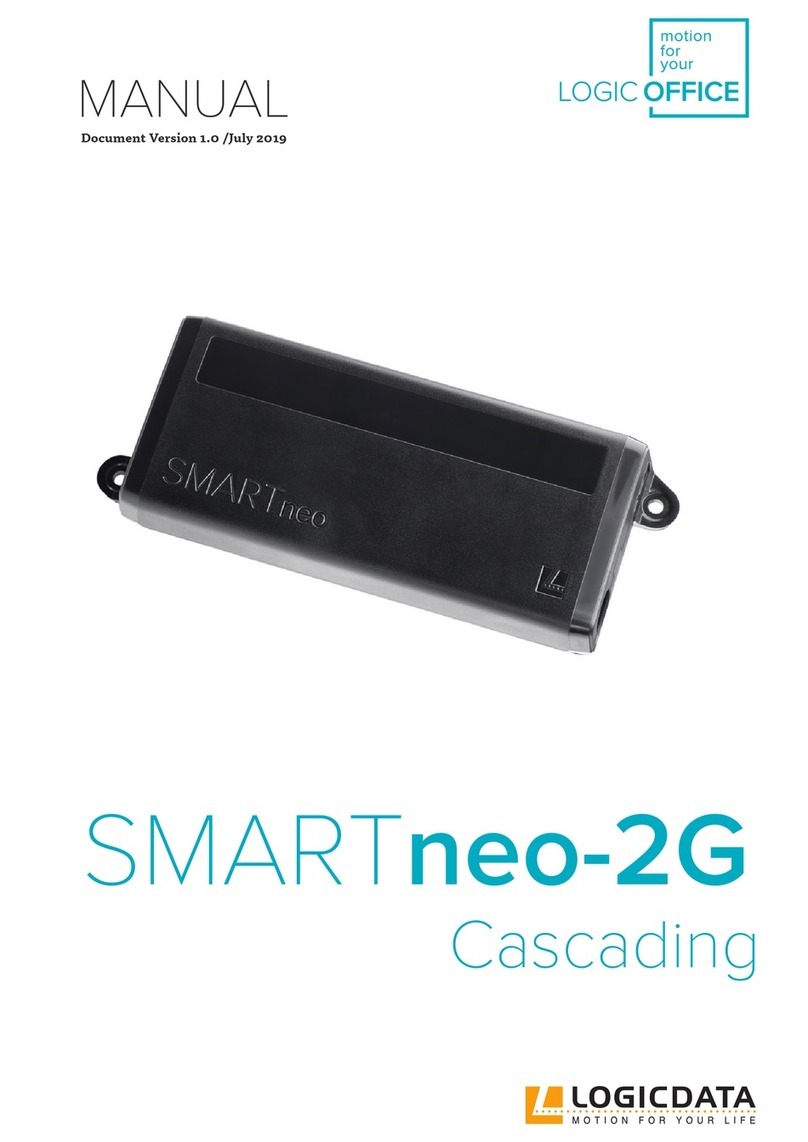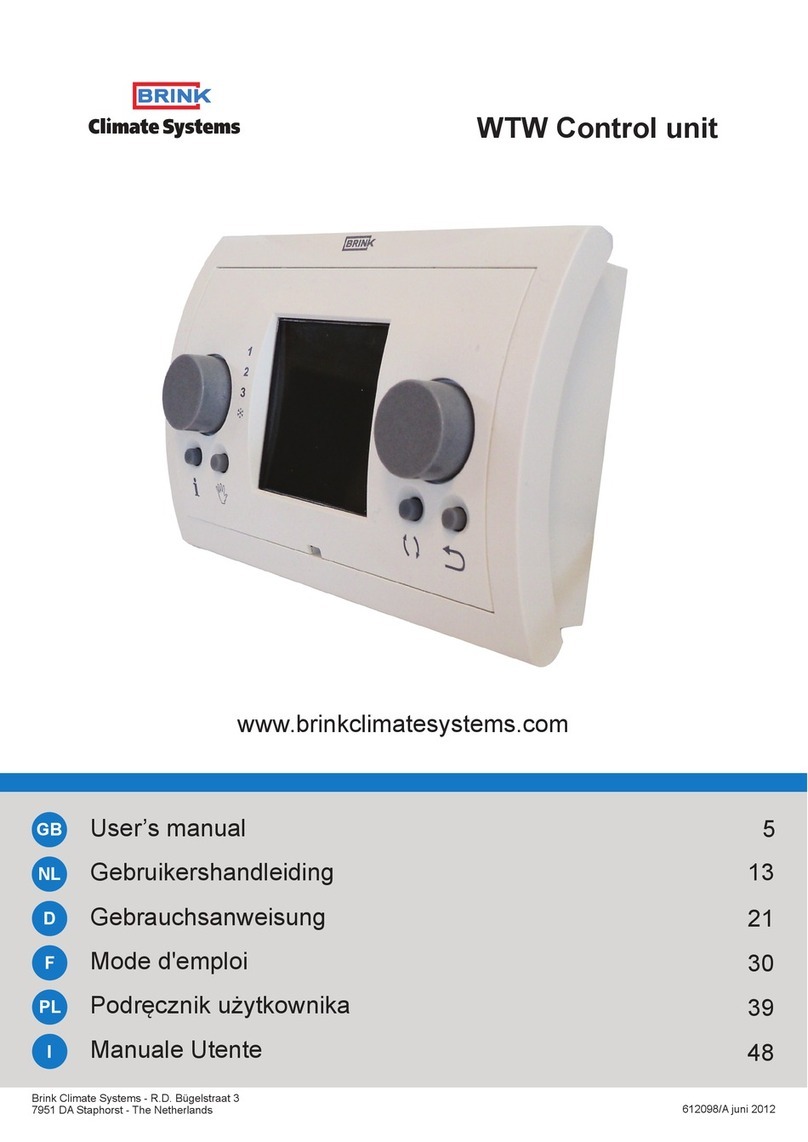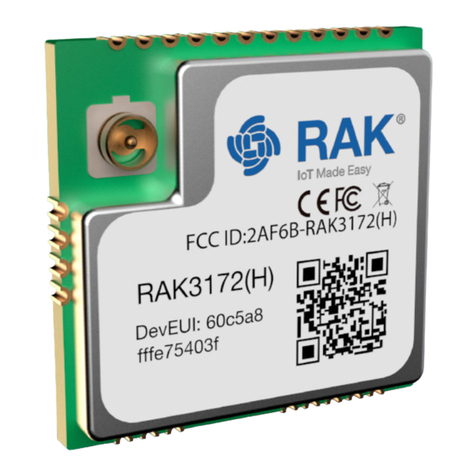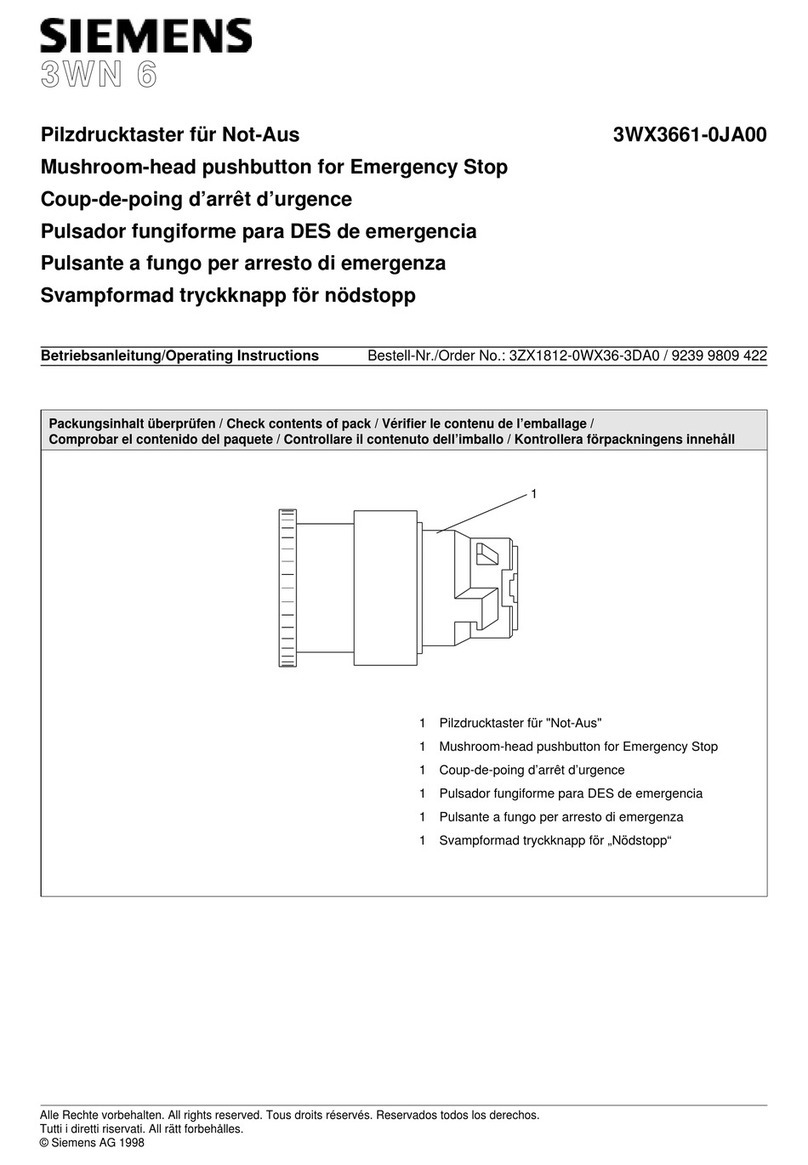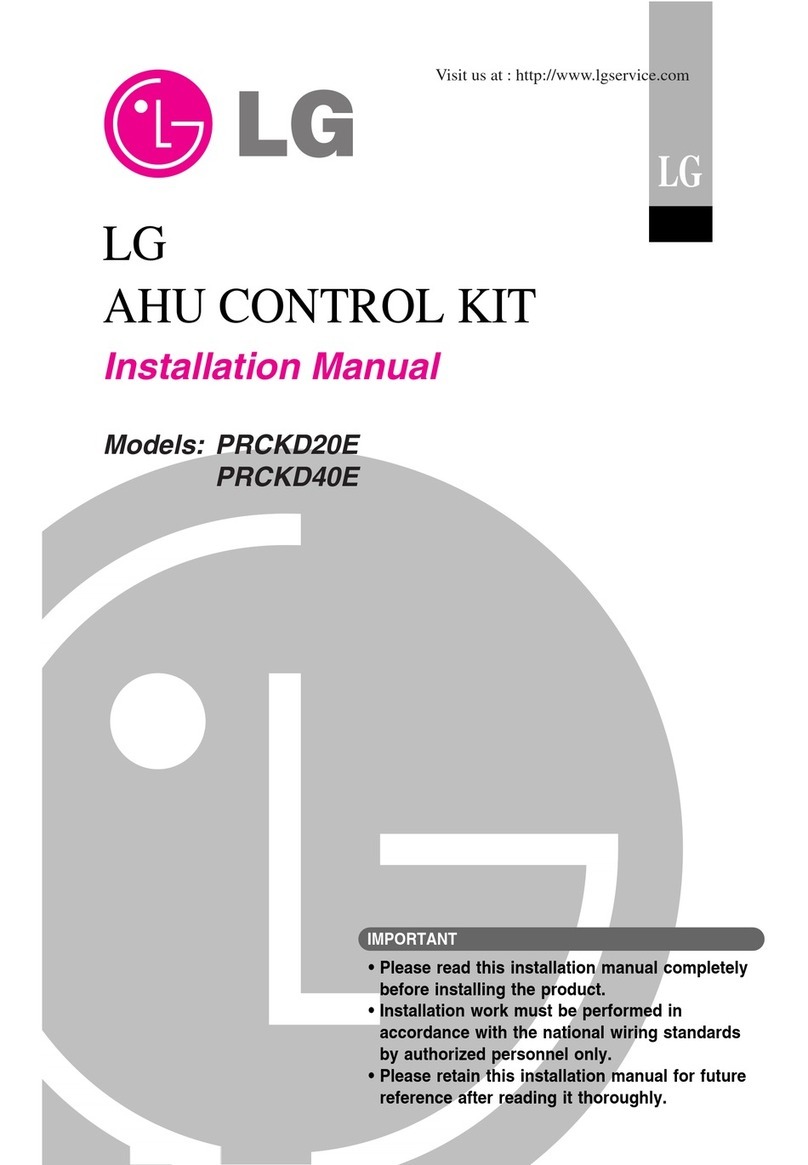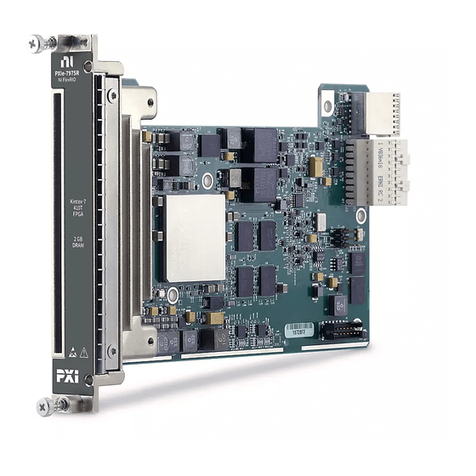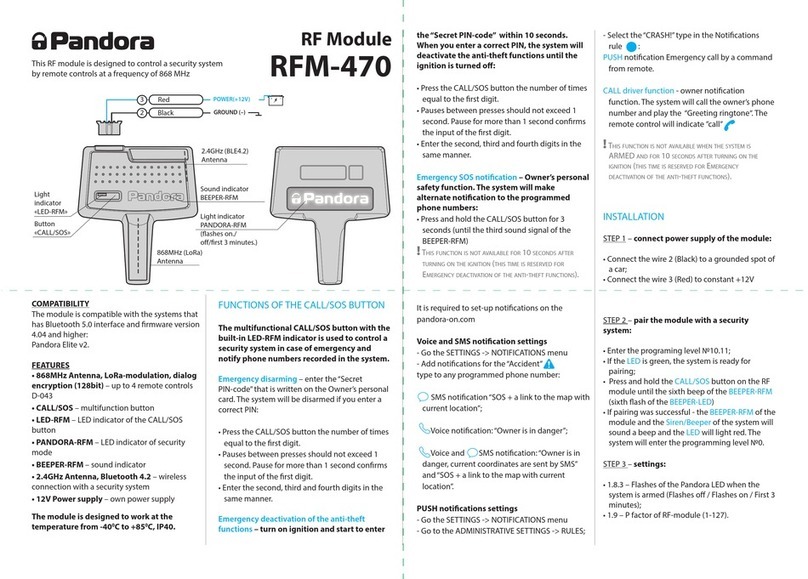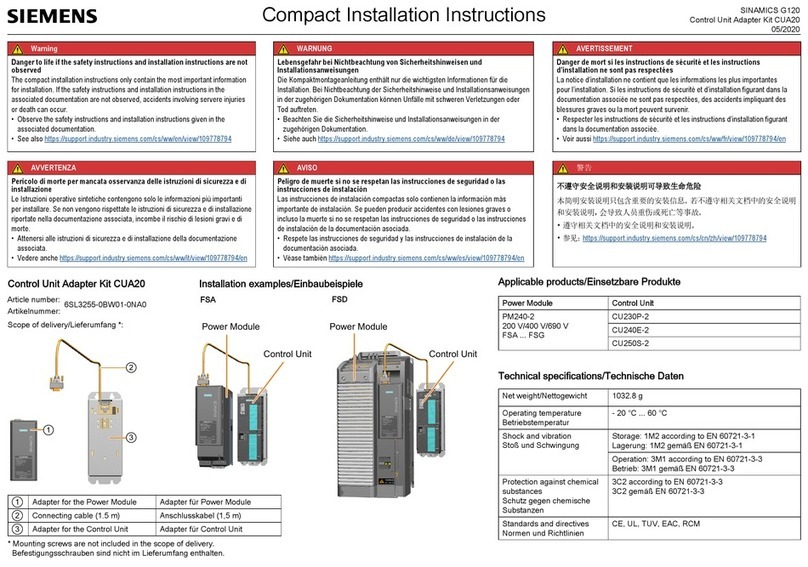Aero-motive 19105 User manual

AEROMOTIVE
Part # 19105,19106,19107, and 19108
Brushless In-Tank Pump Module
2011-2017 Mustang (S197/S550)
2018-2020 Mustang GT/EcoBoost
INSTALLATION INSTRUCTIONS
This product is not legal for sale or use on emission-controlled vehicles except when used as a direct
replacement part matching OEM specification.
WARNING!
Always be aware of flammable situations. Drilling and grinding can be
potential ignition sources. Extinguish all open flames, prohibit smoking and
eliminate all sources of ignition in the area of the vehicle and workspace before
proceeding with the installation. Ensure you are working in a well ventilated area
with an approved fire extinguisher nearby.
WARNING!
Installation of this product requires modification to a fuel tank/ the fuel
system, failure to satisfy all safety considerations will result in fire, explosion,
injury and/or loss of life to yourself and/or others. All fuel system components
MUST be located as far from heat sources as possible, like exhaust, engine block,
etc.
WARNING!
Mechanical and hydraulic lifting devices can tip over or lower accidentally
due to incorrect maneuvering or technical errors. A falling object can cause
injury and/or loss of life to yourself and/or others. When working under the
vehicle, always use stands, and ensure that the ground or floor is stable and
level. Never crawl under a vehicle which is only supported by a jack.
WARNING!
The fuel system is under pressure. Do not open the fuel system until the
pressure has been relieved. Refer to the appropriate vehicle service manual for
the procedure and precautions for relieving the fuel system pressure
.
CAUTION!
When installing this product always wear safety glasses and other
appropriate safety appeal. A drilling operation will cause flying metal chips. Flying
metal chips can cause eye injury.
CAUTION:
Installation of this product requires detailed knowledge of automotive systems
and repair procedures. We recommend that this installation be carried out by a
qualified automotive technician. Careless installation of this product can result in
damage to the product, injury or loss of life to yourself and/or others.

Compatible Fuels:
Pump Gas
Race Gas
E85
This pump assembly is a high-performance factory replacement unit. Key features:
Drops directly into the factory fuel tank (NO CUTTING REQUIRED).
Utilizes patented Aeromotive jet siphon in conjunction with factory jet siphon system so it operates just
like Ford intended.
High flow pre-filter built into inlet of pump.
Includes fuel level mounting bracket for factory leveling unit.
NOTE: The use of Teflon braided line with machine crimped hose ends is recommended. This eliminates the
possibility of fuel vapors permeating through the fuel line.
Maximum continuous operating pressure should not exceed 70 psi.
The enclosed Aeromotive fuel pump utilizes AN-08 ORB (O-ring Boss Port) style outlet port and AN-08 return port; these
ports are NOT PIPE THREAD and utilize NO THREAD SEALANT.
Aeromotive Related Mod Motor Components:
Fuel Filters: Check Valves:
12310 (pump/race gas) 10 micron (A1000) 15107 (-10AN)
12339 (race gas/E85) 10 micron (A1000)
12341 (race gas/E85) 10 micron (Eliminator, 3.5 and 5.0)
12305 (filter bracket)
Fuel Pressure Gauge:
Fuel Pressure Regulators: 15633 (dry 0-100psi)
13303 (-8 ORB ports) A1000
13305 (-8 ORB ports) Eliminator
13134 (-10 ORB ports) 3.5 and 5.0
Outlet Cap Port Fittings:
15607 (-8 ORB x -8 AN Male)
45307 (WRC -8 ORB x -10 AN Male) Note: This fitting is required if plumbing a -10 feed line from the outlet cap.
Electrical Components:
16307 (30 Amp Pump Wiring Kit) Use with A1000, Eliminator, and 3.5 Pump Modules
16308 (60 Amp Pump Wiring Kit) Use with 5.0 Pump Module

OUTLET CAP LAYOUT
The following steps are typical of most installations: (Installation of the Pump Module(s) are the same for all Pump
Versions (A1000, Eliminator, 3.5, and 5.0 Brushless).
1. Drain the fuel tank and disconnect the negative battery cable.
2. Raise and support the vehicle.
3. Remove the back seat from vehicle. Do this by pressing forward on the two retention clips underneath the seat
cushion with a small screwdriver. You can carefully find them at the edge of the cushion when looking at eye level.
When depressed far enough, the seat can be raised and removed easily.
4. Remove black dust plug from driver’s side.
5. Disconnect all electrical connection on the fuel pump top plate and move out of the way.
Connect to 12v Positive “+” DC
from Brushless Controller
Connect to “White” or
“Gray” wire from Brushless
Controller (Pump Speed
Signal Wire)
Fuel Level Terminals
Outlet Port, -08 ORB
Use Port Fitting, PN:
15607
Return Port, -08 ORB
Use Port Fitting, PN:
15607
Connect to Chassis Ground “-“
from Brushless Controller

6. Before removing the factory feed line, relieve system pressure (refer to service manual for proper procedure). Once
system pressure has been relieved, disconnect the feed line from top plate.
7. Remove lock ring from top of tank (pump is spring loaded and will pop up when ring is removed).
8. Slowly pull the fuel pump unit up until you see the quick disconnect fitting and tube. Press the tab and pull the line to
remove. Pay close attention not to bend the float level arm as you remove the hanger assembly.
9. Once the unit is removed, cover the opening in tank so dirt and debris will not enter the tank.
10. Only one part will be used off the hanger assembly, the fuel level sensor. Carefully remove the fuel level sensor from
the OEM pump assembly and set it aside for re-assembly later. Cut the two wires from the fuel level sensor free from
the OEM electrical plug, leave as much wire length as possible.
11. Next attach the pump body to the pump outlet cap by threading the pump on the -10 ORB fitting on the bottom of the
pump outlet cap. Thread the pump body on until it is tight against the outlet cap fitting.
-
10 ORB Fitting
Pump Body
Pump Outlet Cap
Threa
d Pump
Body on
-
1
0 ORB Fitt
ing

12. Once the pump body is threaded onto the -10 ORB fitting, connect the corresponding pump power, ground, and signal
wires on the bottom of the outlet cap with the terminals on top of the pump body. The terminals are marked with an
engraved letter on the top of the pump body and a laser mark on the top of the outlet cap. Connect “R” to “R”, “W” to
“W”, and “B” to “B” using a small 3/8” wrench. Note: Connecting the wires to the incorrect terminals will result in
severe pump damage and will void the warranty, look twice, connect once!
Note: If you need more access to the terminals when connecting the wires, you can slightly unscrew the pump
from the -10 ORB fitting during this step, be sure to re-tighten the pump body after the connections are made!
Wires from Outlet Cap properly connected to the
P
ump Bo
dy
.

13. Next, strip the two wires from the OEM fuel level sensor and crimp the two provided male quick connectors on the
wires. Then install the fuel level sensor on the Aeromotive fuel level sensor bracket. To do this, slide the sensor over
the bracket as shown in the below pictures, ensure the small plastic retainer clip is retained by the bracket tab. Plug
the connectors into the white wires/female quick connectors that are soldered to the bottom of the outlet cap. NOTE:
The sensor is a resistance output only, wiring polarity is bi-directional.
Ensure fuel level sensor is retained by plastic
clip/tab on bracket.
Fuel Level Sensor
properly i
nstalled on bracket.

14. Next, pull the jet siphon tube up out of the tank and connect it to the Aeromotive Jet Siphon male quick connect. You
may have to rotate the quick disconnect on the siphon tube to get it to line up with the Aeromotive Stealth pump.
NOTE: While installing the pump assembly, make sure that the siphon tube is routed as to not interfere with
the float level sensor. The outlet port(s) will face the driver side when installed.
15. Before fully inserting your new Aeromotive Stealth fuel pump in your tank, make sure the factory pump seal is clean
and positioned correctly. It is highly recommended to install a new factory pump seal (not included) when installing
the Aeromotive Stealth fuel pump.
16. Once the pump is in the desired position, install the factory lock ring. Note: The outlet/return port should be
facing the driver’s side of the car when installed correctly.
Install new gasket seal (not included) prior to
full
y inse
r
ting pump
assembly
in tank.

17. Connect the factory fuel level wiring to the Aeromotive fuel level terminals.
NOTE: You must install a by-pass style regulator (Aeromotive part # 13303 for A1000, 13305 for Eliminator, or
13134 for 3.5 and 5.0) with return line in order for the fuel pump to function correctly. Failure to do so will
result in poor performance and fuel pump/system failure.
18. Feed and return lines need to be plumbed into the vehicle now. It’s recommended to run -AN-08 feed for A1000, and
AN -10 feed for Eliminator, 3.5, and 5.0 pump assemblies. The return line should be AN-08. Fuel lines should be
routed and secured away from moving suspension components and exhaust pipes.
19. The Brushless Aeromotive fuel pump controller requires its own relay and 12V power wire along with a 0-5 volt analog
input for the use of the True Variable Speed function. The use of Aeromotive fuel pump wiring kit (part # 16307) is
recommended to power the A1000, Eliminator, and 3.5 remote mount brushless pump controller, use (part # 16308)
for the 5.0 remote mount brushless pump controller. Note: Since the factory Ford fuel pump is pulse modulated
you CANNOT use the factory fuel pump wires to trigger the relay or the 0-5v input for the True Variable Speed
function.
20. As mentioned above, the Brushless Pump Assemblies are controlled by a remote mount brushless pump controller,
which must be installed correctly in order for the pump to function properly. Refer to the following instructions on wiring
the brushless controller or refer to the instructions provided with the included controller itself, PN: 180-48A1-0F-01.
21. Determine a suitable location to mount the new controller remote from the pump considering the following:
a. It is recommended to keep the controller-to-motor lead wire lengths as short as possible for best pump
performance.
b. If desired, motor lead extensions can be used but should be kept as short as possible and lead extensions
should be sized large to keep electrical resistance low (you may even want to use a larger size for the
extensions than the provided leads for long extensions).
c. The controller is fully sealed so it can be mounted externally (frame rail, e.g.). The controller sink is designed to
be able to handle low air flow so it can also be mounted internally (trunk, e.g.). However, for best results, it is
recommended to mount the controller such that it will receive the most and coolest air flow.
When mounting the controller externally and in a location that will likely receive air flow from driving, mount the
controller with fins parallel to the airflow and, if possible, upward (not required with sufficient air flow) as in the
following image.
Lock ring installed to secure pump in place
.

When mounting the controller internally or behind obstructions in a location that will not receive much air flow
from driving, mount the controller with the fins vertically as in the following image to achieve the maximum
natural convective cooling.
d. NOTE: THIS CONTROLLER CAN GET HOT when using full power (60A) continuously with little air flow. Mount
away from locations prone to fuel vapor (e.g., tank vent).
22. Once a suitable location is found, mount the controller in the recommended orientation using the four #10 self-drilling
screws.
23. Crimp the #10 ring terminals to the motor lead wires after cutting to length if not using extensions.
24. Connect the three motor leads from the new controller to the pump matching the colors to the previous wire
locations (In most cases, the black lead connects to the “B”, red to “R”, and white to “W”). Secure connections using
the #10-32 nuts, firmly holding the terminal end in place while tightening.
CAUTION: Ensure that any spilled fuel and any fuel-soaked shop towels are cleaned up and removed from
the vicinity of the vehicle before proceeding.
25. Reconnect power to the new pump controller as shown in the following diagram, +12VDC to the red lead, Ground to
the black lead. NOTE: POWER TO THE PUMP MUST BE FLAT DC, NOT PULSE WIDTH MODULATED!
CAUTION: DO NOT REVERSE THE POLARITY-CONNECT AS ABOVE. Reversing the polarity will render the
controller inoperable and will void all warranties for this product!
Up
Air Flow
from
Driving
Up

26. This pump controller allows the ability to change the speed of the pump via a 0-5VDC analog input to the yellow
signal wire. THE CONTROL SIGNAL MUST BE A TRUE ANALOG INPUT, NOT PWM. A PWM signal can only be
used if filtered sufficiently for smooth operation. The signal wire used to control the speed of the pump may be
connected in ONE of multiple configuration examples as shown in the following illustrations to control the speed of
the pump.
27. This pump controller has a minimum floor for pump speed of approximately 40% depending on the pump. This
means that fuel pump speed will not fall below 40% of full speed with zero input voltage on the yellow control signal
wire.
28. This pump controller has a minimum voltage threshold of approximately 0.5VDC. Voltage above 0.5VDC on the
yellow input wire will increase the speed of the pump. Signal input of voltage below 0.5VDC will have no effect on
pump speed. This ensures allowance for minimum, closed throttle TPS settings of up to 0.5VDC without affecting
fuel pump speed at idle.
29. This pump controller has a full pump speed voltage threshold of approximately 3.7VDC, where the full pump speed
will be achieved with signal input voltage at or above 3.7VDC and above which no further change in pump speed
will occur. This ensures that when a TPS signal is used to drive pump speed that typical throttle openings of 70-
75% and higher will ensure full fuel pump volume is delivered to the fuel rail or carburetor. Voltage between
0.5VDC and 3.7VDC will vary the speed of the fuel pump according to the voltage applied.
CONTROL CONFIGURATIONS:
MODE 1 – TPS or Other 0-5VDC Input Control
Aeromotive recommends the “Mode 1” control method where the 0-5VDC signal input is tied to a Throttle Position
Sensor using the output wire to the ECU. The intent for this control is to reduce the fuel pump output (and thus the
amount of returned fuel flow) during low throttle opening (low engine demand) to reduce excess recycling of fuel to
help keep fuel tank temperatures low. Alternatively, other 0-5VDC analog output sensors (some MAF sensors, a 2
or 3-Bar MAP sensor, etc.) or voltage dividing/regulating/switching components may be used. It is the customer’s
responsibility to ensure a signal supply and control strategy where the fuel flow is sufficient to meet engine demand.
If no signal supply is suitable or desired, the controller can still be wired for use as in Modes 2 – 4, as shown
following, to allow different fuel pump speed and flow outputs from the pump.
USER SUPPLIED
+12VDC
GND
0-5VDC
Fuel Pump
Switch
Clean
Chassis
Grounds
16 or 18 AWG
16 or 18 AWG
+12 VDC Power
Source which is
controlled wi
th Main
Power Switch
+12 VDC
From Battery
+
-
Aeromotive
Fuel Pump
Fuse,
30A Min
10 AWG Min
10
AWG
Min
10 AWG Min
Min 30A Relay

MODE 2 – Constant Full Speed
MODE 3 – Constant Low Speed
MODE 4 – Switched Speed On - Demand from Low to High
Mode 4 can be activated by any relay or switch providing 5VDC or higher (system voltage up to 19VDC is fine) to
the control wire. A relay for this purpose could be activated using the programmable output from a tunable ECU, or
via a boost Hobb’s or WOT switch connected to 12VDC to name a few examples.
30. After all wire connections are made, attach a suitable fuel pressure gauge to the fuel system Schrader valve, fuel
rail or fuel pressure regulator test port. Examples:
Aeromotive P/N 15632 0-15 PSI (1 ½”) Fuel Pressure Gauge
Aeromotive P/N 15633 0-100 PSI (1 ½”) Fuel Pressure Gauge
Ensure that any spilled fuel and any fuel-soaked shop towels are cleaned up and removed from the vicinity
of the vehicle.
CAUTION: While performing the following steps, if any fuel leaks are detected, immediately turn the ignition
to OFF, remove any spilled fuel and repair the leak(s) before proceeding!
31. Turn the ignition to ON without starting the engine, allow the pump to run for several seconds and check the fuel
pressure. If there is no pressure, turn the ignition to OFF, wait one minute, then turn the ignition to ON and recheck
the pressure. Repeat this ignition OFF and ON procedure until the gauge registers pressure or you detect a fuel
USER SUPPLIED
GND
USER SUPPLIED
+12VDC
GND
USER SUPPLIED
+12VDC GND
Switch
+12VDC

leak. If no pressure is registered on the gauge after running the pump for several seconds and you have found no
leaks, check all fuel and electrical connections to determine the cause. IF THE PUMP IS RUNNING BACKWARDS,
REPEAT THE ABOVE STEPS SWITCHING ANY OF THE TWO MOTOR LEAD WIRES FROM STEP 21, then
reconnect and retest the pump.
CAUTION: DO NOT REVERSE THE TWO POWER LEADS EXTERNAL TO THE CAP! Reversing the polarity of
the main power and ground wires going into the controller will render the controller inoperable and will void
all warranties for this product!
32. Once the fuel pressure gauge registers pressure, start the engine. If you have installed an adjustable fuel pressure
regulator, switch the pump to full speed and adjust fuel pressure to the desired setting.
Test-drive the vehicle to insure proper operation and re-check the fuel system for leaks. If any leaks are found,
immediately discontinue use of the vehicle and repair the leak(s)!
Contact Us
RGA NUMBER REQUIRED FOR ALL RETURNS TO AEROMOTIVE.
To obtain an RGA number, please call (913) 647–7300 and ask for the Returns and Repairs department or
complete the online form under the “Rebuilds” section at www.aeromotiveinc.com .
Shipping & Returns
Aeromotive Inc.
11414 W 79th Street.
Lenexa, KS 66214
General Inquiries and Tech Line: (913) 647-7300
General Email: info@aeromotiveinc.com
Tech Email: t[email protected]m
The Aeromotive Tech Lines are open Monday through Friday from 9:30AM to 5:00PM Central Standard Time.

WARNING:
This product can expose you to chemicals,
including chromium, which is known to the State of California
to cause cancer or birth defects or other reproductive harm.
For more information, visit: www.p65Warnings.ca.gov
Aeromotive, Inc. 7805 Barton Street, Lenexa, KS 66214 Phone: (913) 647-7300 Fax: (913) 647-7207
AEROMOTIVE, INC. LIMITED WARRANTY
This Aeromotive Product, with proof of purchase dated on or after January 1, 2003, is warranted to
be free from defects in materials and workmanship for a period of one year from the original date of
purchase. No warranty claim will be valid without authentic, dated proof of purchase.
This warranty is to the original retail purchaser and none other and is available directly from
Aeromotive and not through any point of distribution or purchase.
If a defect is suspected, the retail purchaser must contact Aeromotive directly to discuss the problem,
possible solutions and obtain a Return Goods Authorization (RGA), if deemed necessary by the
company. Please call 913-647-7300 and dial option 3 for the technical service dept. All returns must
be shipped freight pre-paid to the company and with valid RGA before they will be processed.
Aeromotive will examine any product returned with the proper authorization to determine if the failure
resulted from a defect or from abuse, improper installation, misapplication or alteration. Aeromotive
will then, at it’s sole discretion, return, repair or replace the product.
If any Aeromotive product is determined defective, buyer’s exclusive remedy is limited in value to the
sale price of the good. In no event shall Aeromotive be liable for incidental or consequential
damages.
Aeromotive expressly retains the right to make changes and improvements in any product it
manufactures and sells at any time. These changes and improvements may be made without notice
at any time and without any obligation to change the catalogs or printed materials.
Aeromotive expressly retains the right to discontinue at any time and without notice any Aeromotive
product that it manufactures or sells.
This warranty is limited and expressly limits any implied warranty to one year from the date of the
original retail purchase on all Aeromotive products.
No person, party or corporate entity other than Aeromotive shall have the right to: determine whether
or not this Limited Warranty is applicable to any Aeromotive product, authorize any action
whatsoever under the terms and conditions of this Limited Warranty, assume any obligation or
liability of any nature whatsoever on behalf of Aeromotive under the terms and conditions of this
Limited Warranty.
This Limited Warranty covers only the product itself and not the cost of installation or removal.
This Limited Warranty is in lieu of and expressly excludes any and all other warranties, expressed or
implied. This Limited Warranty gives you specific legal rights, and you may also have other rights
which vary from state to state.
This manual suits for next models
3
Popular Control Unit manuals by other brands
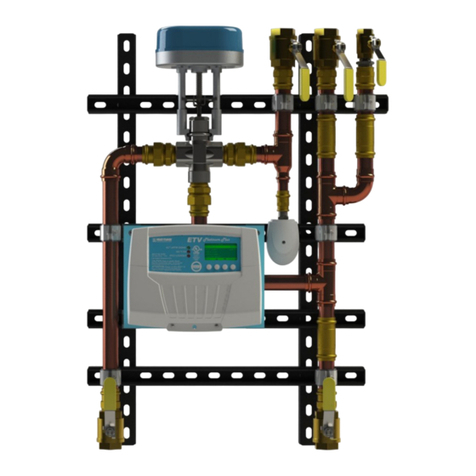
heat-timer
heat-timer ETS-LT Installation and operation manual

Emerson
Emerson FISHER CV500 instruction manual
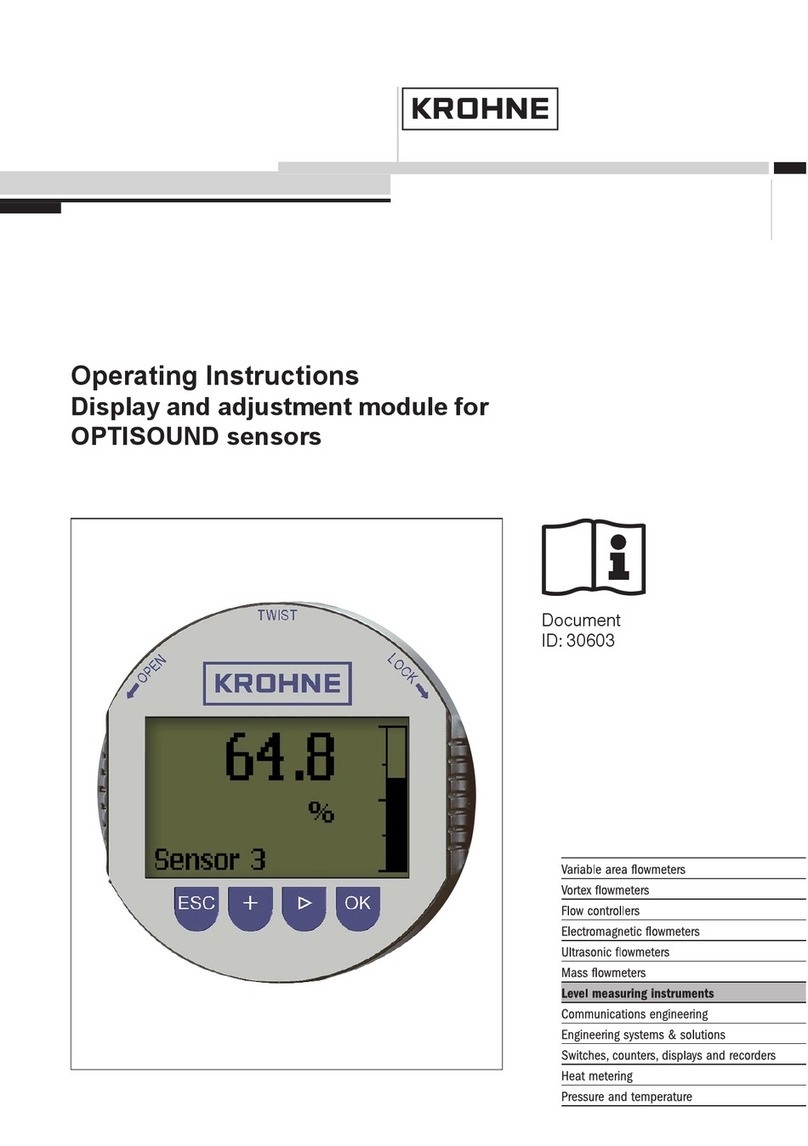
KROHNE
KROHNE Display and adjustment module for OPTISOUND... operating instructions
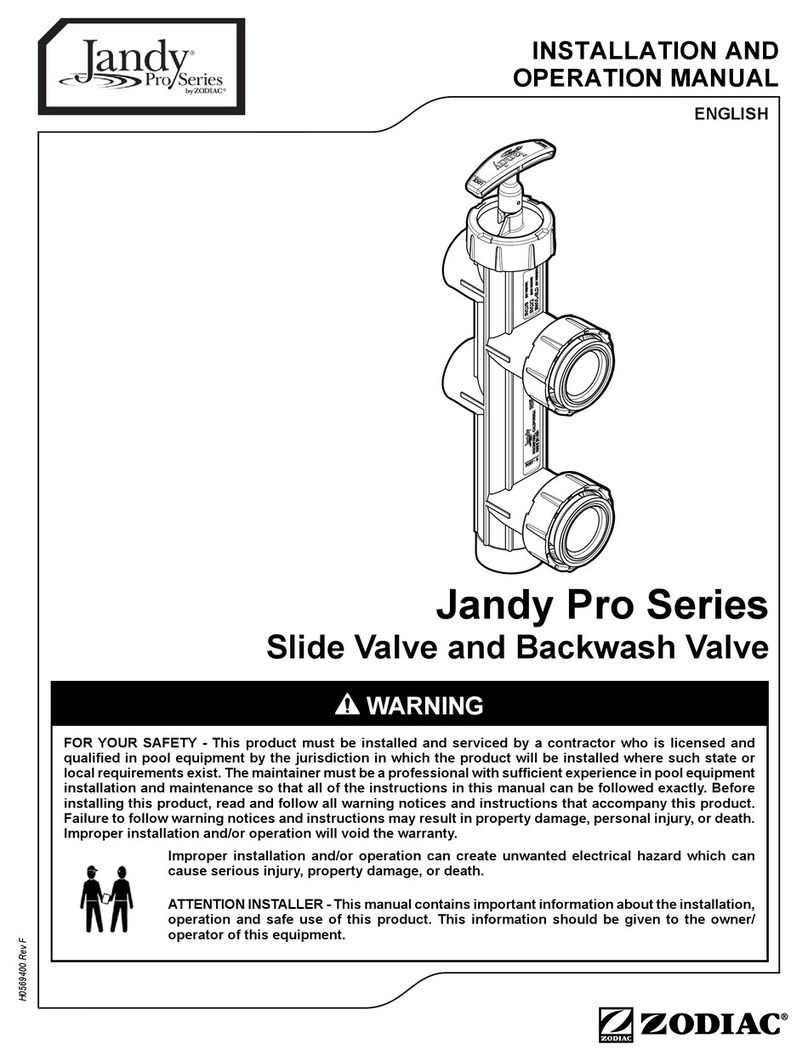
Zodiac
Zodiac Jandy Pro Series Installation and operation manual

Morningstar
Morningstar RelayDriver Installation and operation manual
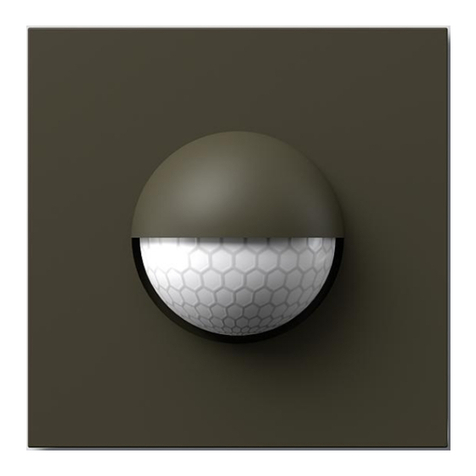
SSS Siedle
SSS Siedle BMM 611-0 Product information
